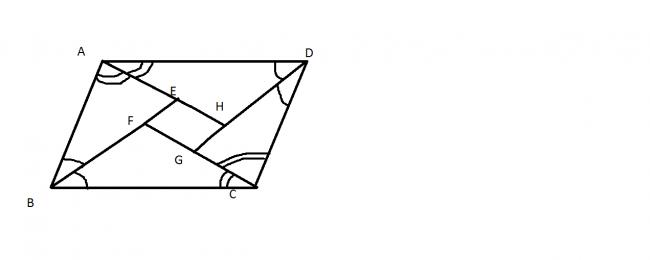 36
36Easy.......!
Since, ABCD is a parallelogram
so,
LA + LD = 180° --------- (sum of co-interior angles)
=> LA/2 + LD/2 = 90°
=> LH = 90° ----------------- (exterior angle for triangle ADH)
Similarly, LE = LF = LG = 90°
and so, LE = LF = LG = LH = 90°. So we have all the angles equal to 90°
and there can be a case when EF = FG = GH = EH
as every square is a rectangle but every rectangle is not a square.....
Thus EFGH is a rectangle.... simple....!!!!! isn't it
 11
11prove that,FH parallel to BC and,EG parallel to DC.
 1
1efgh will be square if only abcd is rectangle. fh parallel to bc can be proved by using similarity. the diagram is wrong. pls inform me if i am wrong.
 21
21Plz tell me why do you think the diagram is wrong?
 36
36Now what wrong do you guys find in my solution
 62
62Does AH seem to be the angular bisector of angle A?
What rahul has proved seems to be correct though.. but it is because all steps would remain the same even with that new diagram [1]
